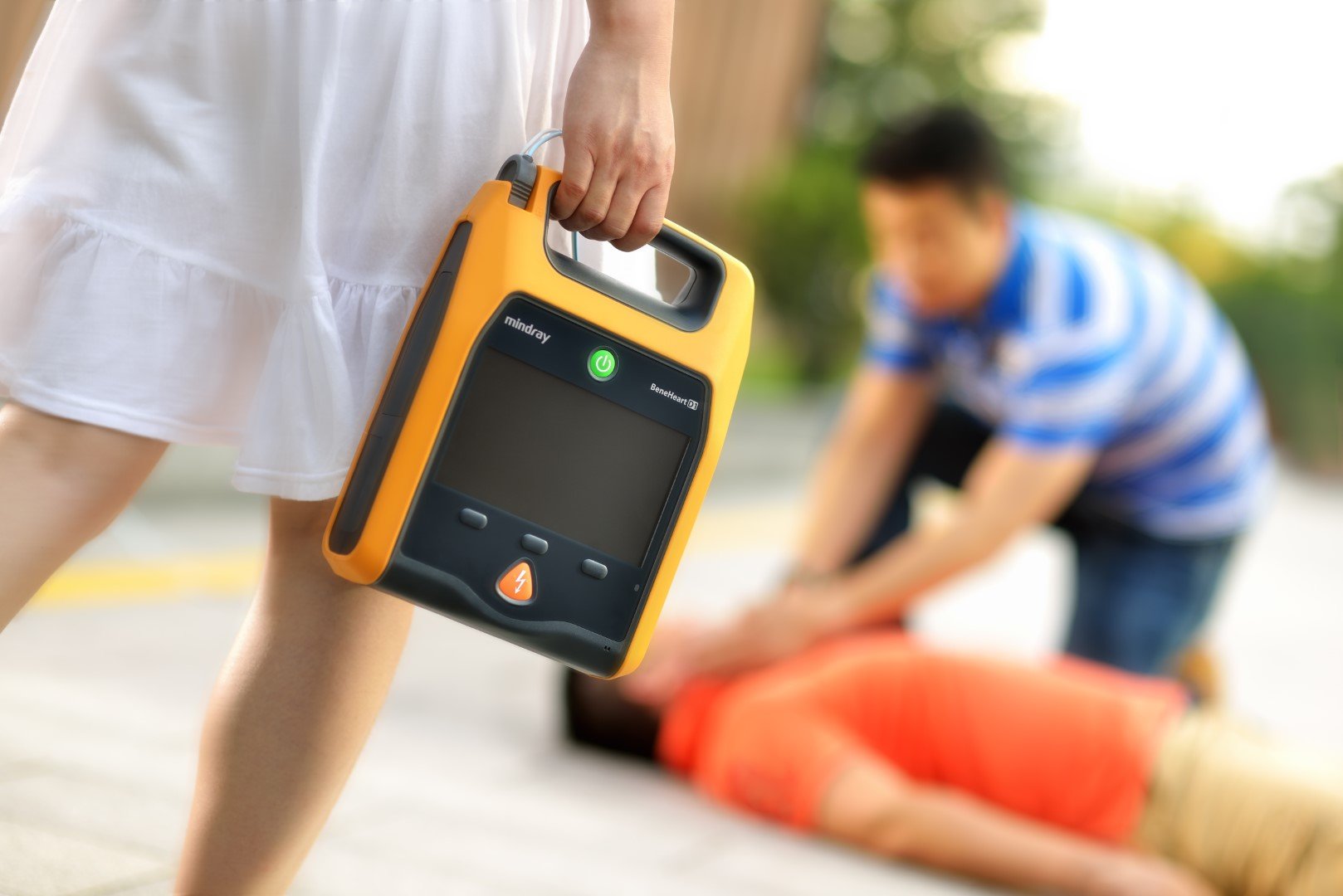
Key facts
- A defibrillator is a device that uses electricity to re-start the heart or shock it back into a normal rhythm.
- Automated external defibrillators (AED) are usually found in public spaces and can be used by anyone.
- Defibrillators can be used on people who need CPR, such as someone who has had a sudden cardiac arrest.
- If you think someone is having a cardiac arrest, call triple 000, begin CPR, and use an AED as soon as possible.
What is a defibrillator?
A defibrillator is a device that uses electricity to re-start the heart or shock it back into a normal rhythm. They are sometimes called a ‘defib’.
The defibrillator checks the person’s heart rhythm to decide whether an electric shock is needed.
What are the different types of defibrillators?
There are several types of defibrillators, and they work in different ways.
Automated external defibrillators (AEDs)
AEDs are found in public places and can be used by anybody in an emergency. They guide you through each step of the process. Some models ask you to press a button to deliver the shock, and other models deliver the shock automatically.
If a person’s heart is beating normally, they don’t need a shock. The AED will check this. It won’t give the person an electric shock unless it’s necessary. So, you can’t harm someone by using an AED.
Implantable cardioverter defibrillators (ICDs)
ICDs are defibrillators that are surgically placed inside your body.
They are used in people who are at high risk of having a life-threatening heart rhythm problem (heart arrhythmia).
Wearable cardioverter defibrillators (WCDs)
WCDs rest on the body. They are usually used by people who are:
- recovering from a heart attack
- waiting for a heart transplant
When would I need to use a defibrillator?
If you need to give someone first aid, follow the DRSABCD action plan. Defibrillation is the last step in this action plan.
Defibrillators are used when someone has a cardiac arrest. This is when the heart suddenly stops pumping properly. Defibrillators should be used alongside cardiopulmonary resuscitation (CPR).
Each year, more than 30,000 Australians have a cardiac arrest. If it happens outside a hospital, the chances of surviving are less than 1 in 10.
A cardiac arrest is not the same as a heart attack, but both are emergencies.
Signs that someone is having a cardiac arrest include:
- collapse
- loss of consciousness
- abnormal breathing or not breathing at all
- no pulse
Giving the person CPR and using an AED as soon as possible can greatly increase the chances of survival. The most important thing is to use the AED quickly. Time is crucial.
Where can I find the nearest defibrillator?
AEDs are often found in public places, such as:
- community centres
- workplaces
- schools
- shopping and business centres
- sporting clubs and gyms
- public libraries
- parks
- beaches
In indoor spaces, defibrillators may be found in a foyer or reception area. They will be clearly visible.
The St John Ambulance First Responder app (Android, iOS) can help you locate public defibrillators near you if you are in WA, ACT or NT. It can also send your GPS location when you call Triple 000, helping the ambulance get to you faster.
How do I use an automated external defibrillator (AED)?
Anyone can use an AED. AEDs must be used along with CPR. The device will verbally tell you what to do. It will usually come with visual prompts too.
Where can I buy an AED?
You can buy an AED for your home, organisation or workplace. If you want to buy an AED, be sure to:
- get it from an Australian supplier
- buy a model that is approved by the Therapeutic Goods Administration (TGA)
Display the AED where it is visible and accessible to all users. Make sure people know where it is. It’s a good idea to train people how to use it.
Be sure to regularly check the AED and maintain it to the manufacturer’s recommendations.

